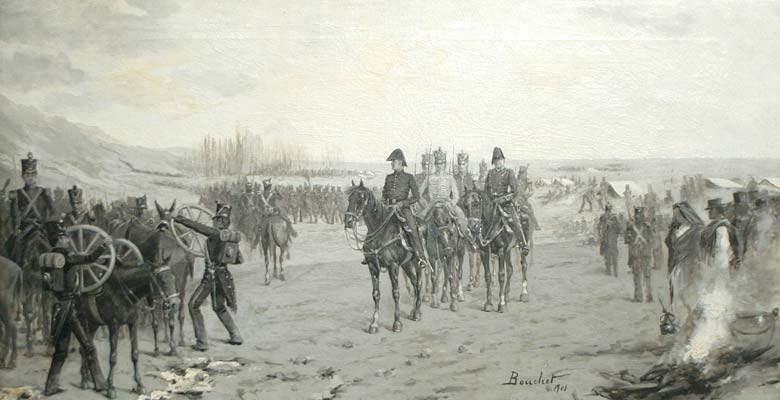|
Zamba (music)
Zamba is an Argentinian music genre and a folk dance. Zamba is very different from its homophone, the samba - musically, rhythmically, temperamentally, in the steps of the dance and in its costume. It has six beats to the bar and is a majestic dance, performed by couples who circle each other waving white handkerchiefs very elegantly. It has common elements with the cueca. Zambas are composed about many themes, from those that celebrate people or events of Argentine history, to those that describe the beauty of a region, or of its women. There are zambas of political protest, and even one called ''Aerolíneas Argentinas''. The ''bombo legüero'' drum is prominent in the playing of the zamba. Name and origin The name "zamba" refers to a colonial term for zambo (people that are descendants of Amerindian and African people). It is therefore called zamba because its lyrical content was aimed at its native listeners. The dance originated in the Argentine province of Salta in the Cr ... [...More Info...] [...Related Items...] OR: [Wikipedia] [Google] [Baidu] |
Buenos Aires
Buenos Aires, controlled by the government of the Autonomous City of Buenos Aires, is the Capital city, capital and largest city of Argentina. It is located on the southwest of the Río de la Plata. Buenos Aires is classified as an Alpha− global city, according to the Globalization and World Cities Research Network, GaWC 2024 ranking. The city proper has a population of 3.1 million and its urban area 16.7 million, making it the List of metropolitan areas, twentieth largest metropolitan area in the world. It is known for its preserved eclecticism, eclectic European #Architecture, architecture and rich culture, cultural life. It is a multiculturalism, multicultural city that is home to multiple ethnic and religious groups, contributing to its culture as well as to the dialect spoken in the city and in some other parts of the country. This is because since the 19th century, the city, and the country in general, has been a major recipient of millions of Immigration to Argentina, im ... [...More Info...] [...Related Items...] OR: [Wikipedia] [Google] [Baidu] |
Bombo Legüero
Bombo legüero is an Argentine drum traditionally made of a hollowed tree trunk and covered with cured skins of animals such as goats, cows (leather) or sheep; ''legüero'' signifies that one could supposedly hear it a league away. It derives from the old European military drums, and uses a similar arrangement of hoops and leather thongs and loops to tighten the drumheads, which are usually double. It is also called bombo legüero to differentiate it from similar large drums. The body is made of a hollow log, with the inside scraped and chiseled. The drumheads are made of the skins of animals such as cows, sheep, or guanacos. Because the fur is left on the hide, the bombo's sound is deep and dark. The bombo is played while hanging to the side of the drummer, who drapes one arm over the drum, to play it from above, while also striking it from the front. The player's hands hold a soft-headed mallet and a stick, which strike drumhead and wooden rim in alternation. The bombo serves as a ... [...More Info...] [...Related Items...] OR: [Wikipedia] [Google] [Baidu] |
Argentine Dances
Argentines, Argentinians or Argentineans are people from Argentina. This connection may be residential, legal, historical, or cultural. For most Argentines, several (or all) of these connections exist and are collectively the source of their being Argentine. Argentina is a multiethnic society, multiethnic society, home to people of various Ethnicity, ethnic, Race (human categorization), racial, Religion, religious, Religious denomination, denomination, and Nationality, national origins, with the majority of the population made up of Old World immigrants and their descendants. As a result, Argentines do not equate their nationality with ethnicity, but with citizenship and allegiance to Argentina. Aside from the indigenous population, nearly all Argentines or their ancestors immigrated within the past five centuries. Among countries in the world that have received the most immigrants in modern history, Argentina, with 6.6 million, ranks second to the United States (27 million), ... [...More Info...] [...Related Items...] OR: [Wikipedia] [Google] [Baidu] |
Bolivia
Bolivia, officially the Plurinational State of Bolivia, is a landlocked country located in central South America. The country features diverse geography, including vast Amazonian plains, tropical lowlands, mountains, the Gran Chaco Province, warm valleys, high-altitude Andean plateaus, and snow-capped peaks, encompassing a wide range of climates and biomes across its regions and cities. It includes part of the Pantanal, the largest tropical wetland in the world, along its eastern border. It is bordered by Brazil to the Bolivia-Brazil border, north and east, Paraguay to the southeast, Argentina to the Argentina-Bolivia border, south, Chile to the Bolivia–Chile border, southwest, and Peru to the west. The seat of government is La Paz, which contains the executive, legislative, and electoral branches of government, while the constitutional capital is Sucre, the seat of the judiciary. The largest city and principal industrial center is Santa Cruz de la Sierra, located on the Geog ... [...More Info...] [...Related Items...] OR: [Wikipedia] [Google] [Baidu] |
José De San Martín
José Francisco de San Martín y Matorras (; 25 February 177817 August 1850), nicknamed "the Liberator of Argentina, Chile and Peru", was an Argentine general and the primary leader of the southern and central parts of South America's successful struggle for independence from the Spanish Empire who served as the Protector of Peru. Born in Yapeyú, Corrientes, in modern-day Argentina, he left the Viceroyalty of the Río de la Plata at the early age of seven to study in Málaga, Spain. In 1808, after taking part in the Peninsular War against France, San Martín contacted South American supporters of independence from Spain in London. In 1812, he set sail for Buenos Aires and offered his services to the United Provinces of the Río de la Plata, present-day Argentina and other countries. After the Battle of San Lorenzo and time commanding the Army of the North during 1814, he organized a plan to defeat the Spanish forces that menaced the United Provinces from the north, us ... [...More Info...] [...Related Items...] OR: [Wikipedia] [Google] [Baidu] |
Peru
Peru, officially the Republic of Peru, is a country in western South America. It is bordered in the north by Ecuador and Colombia, in the east by Brazil, in the southeast by Bolivia, in the south by Chile, and in the south and west by the Pacific Ocean. Peru is a Megadiverse countries, megadiverse country, with habitats ranging from the arid plains of the Pacific coastal region in the west, to the peaks of the Andes mountains extending from the north to the southeast of the country, to the tropical Amazon basin rainforest in the east with the Amazon River. Peru has Demographics of Peru, a population of over 32 million, and its capital and largest city is Lima. At , Peru is the List of countries and dependencies by area, 19th largest country in the world, and the List of South American countries by area, third largest in South America. Pre-Columbian Peru, Peruvian territory was home to Andean civilizations, several cultures during the ancient and medieval periods, and has one o ... [...More Info...] [...Related Items...] OR: [Wikipedia] [Google] [Baidu] |
Ethnic Groups Of Africa
The ethnic groups of Africa number in the thousands, with each ethnicity generally having their own language (or dialect of a language) and culture. The ethnolinguistic groups include various Afroasiatic, Khoisan, Niger-Congo, and Nilo-Saharan populations. The official population count of the various ethnic groups in Africa is highly uncertain due to limited infrastructure to perform censuses, and due to rapid population growth. Some groups have alleged that there is deliberate misreporting in order to give selected ethnicities numerical superiority (as in the case of Nigeria's Hausa, Fulani, Yoruba, and Igbo peoples). A 2009 genetic clustering study, which genotyped 1327 polymorphic markers in various African populations, identified six ancestral clusters. The clustering corresponded closely with ethnicity, culture, and language. A 2018 whole genome sequencing study of the world's populations observed similar clusters among the populations in Africa. At K=9, distinct ancestr ... [...More Info...] [...Related Items...] OR: [Wikipedia] [Google] [Baidu] |
Amerindian
In the Americas, Indigenous peoples comprise the two continents' pre-Columbian inhabitants, as well as the ethnic groups that identify with them in the 15th century, as well as the ethnic groups that identify with the pre-Columbian population of the Americas as such. These populations exhibit significant diversity; some Indigenous peoples were historically hunter-gatherers, while others practiced agriculture and aquaculture. Various Indigenous societies developed complex social structures, including pre-contact monumental architecture, organized city, cities, city-states, chiefdoms, state (polity), states, monarchy, kingdoms, republics, confederation, confederacies, and empires. These societies possessed varying levels of knowledge in fields such as Pre-Columbian engineering in the Americas, engineering, Pre-Columbian architecture, architecture, mathematics, astronomy, History of writing, writing, physics, medicine, Pre-Columbian agriculture, agriculture, irrigation, geology, minin ... [...More Info...] [...Related Items...] OR: [Wikipedia] [Google] [Baidu] |
Zambo
Zambo ( or ) or Sambu is a racial term historically used in the Spanish Empire to refer to people of mixed Amerindian, Indigenous Amerindian and West African people, African ancestry. Occasionally in the 21st century, the term is used in the Americas to refer to persons who are of mixed West African people, African and Indigenous peoples of the Americas, Native American ancestry. The equivalent term in Brazil is (). However, in Portugal and Portuguese-speaking Africa, ''cafuzo'' is used to refer to someone born of an African person and a person of mixed African and European ancestry. Background The word is believed to have originated from one of the Romance languages or Latin and its direct descendants. The feminine word is (not to be confused with the Argentina, Argentine Zamba (artform), Zamba folk dance.) In some parts of colonial Spanish America, the term applied to the children of one African and one Amerindian parent, or the children of two zambo parents. In New S ... [...More Info...] [...Related Items...] OR: [Wikipedia] [Google] [Baidu] |
Aerolíneas Argentinas
Aerolíneas Argentinas, formally ''Aerolíneas Argentinas S.A.'', is the state-owned flag carrier of Argentina and the country's largest airline. The airline was created in 1949, from the merger of Aeroposta Argentina (AA), Aviación del Litoral Fluvial Argentino (ALFA), Flota Aérea Mercante Argentina (FAMA), and Zonas Oeste y Norte de Aerolíneas Argentinas (ZONDA), and started operations in December 1950. A consortium led by Iberia took control of the airline in 1990, and Grupo Marsans acquired the company and its subsidiaries in 2001, following a period of severe financial difficulties that put the airline on the brink of closure. The airline was renationalized in late 2008. It has its headquarters in Buenos Aires. The airline joined the SkyTeam alliance in August 2012; the airline's cargo division became a member of SkyTeam Cargo in November 2013. Aerolíneas Argentinas and its former sister company Austral Líneas Aéreas operate from two hubs, both located in Buenos ... [...More Info...] [...Related Items...] OR: [Wikipedia] [Google] [Baidu] |
Zamacueca
The Zamacueca is an ancient colonial dance and music that originated in the Viceroyalty of Peru, taking its roots from Spanish, and Andean rhythms. See also *Dances of Peru *Latin American music The music of Latin America refers to music originating from Latin America, namely the Spanish language, Spanish and Portuguese language, Portuguese-speaking regions of the Americas south of the United States. Latin American music highly incorpor ... * Música criolla * Music of Peru * Cueca References External links Peruvian dances 16th-century music genres {{Dance-stub ... [...More Info...] [...Related Items...] OR: [Wikipedia] [Google] [Baidu] |





